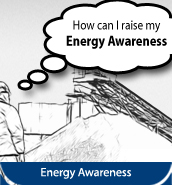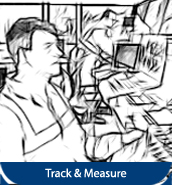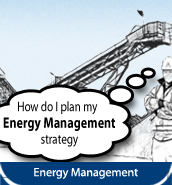
-
How ToBurner Optimisation

This guide is designed to complement the asphalt dryer burner toolbox talk. It focuses on:
- Why it makes sense to save energy on your dryer burner
- Practical steps to make your dryer burner more efficient
- Tools to help you plan and record

 Burner Optimisation
Burner Optimisation -
How ToCompressed Air

This guide is designed to complement the compressed air toolbox talk. It focuses on:
- Why it makes sense to save energy on your compressed air system
- Practical steps to make your system more efficient
- Tools to help you plan and record

 Compressed Air
Compressed Air -
How ToEnergy Awareness

This guide is designed to complement the energy awareness toolbox talk. It focuses on:
- Why it makes sense to raise energy awareness on your site
- Practical steps to make energy saving something people talk and care about
- Tools to help you plan and record

 Energy Awareness
Energy Awareness -
How ToInsulation

This guide is designed to complement the insulation toolbox talk. It focuses on:
- Why it makes sense to save energy through good insulation
- Practical steps to reduce heat loss and insulate effectively
- Tools to help you plan and record

 Insulation
Insulation -
How ToMoisture Control

This guide is designed to complement the moisture control toolbox talk. It focuses on:
- Why it makes sense to control the moisture in your aggregate
- Practical steps to reduce moisture levels in your aggregate
- Tools to help you plan and record

 Moisture Control
Moisture Control -
How ToOptimise Site Running

This guide is designed to complement the toolbox talk on running your site at optimum efficiency. It focuses on:
- Why it makes sense to optimise your site
- Practical steps to make your site more efficient
- Tools to help you plan and record

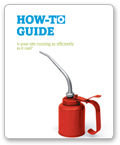 Optimise Site Running
Optimise Site Running -
How ToPumping

This guide is designed to complement the water pumping toolbox talk. It focuses on:
- Why it makes sense to save energy on pumping water
- Practical steps to make your site's water pumping system more efficient
- Tools to help you plan and record

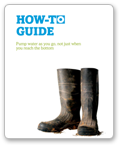 Pumping
Pumping -
How ToVSDs

This guide is designed to complement the motor speed toolbox talk. It focuses on:
- Why it makes sense to save energy by using variable speed drives, especially on fans
- Practical steps to make your fans more efficient
- Tools to help you plan and record

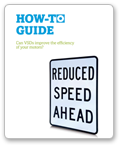 VSDs
VSDs -
How ToEnergy Management

This guide is designed to complement the energy management toolbox talk. It focuses on:
- Why it makes sense to have energy saving targets
- Practical steps to create an energy reduction action plan
- Tools to help you plan and record

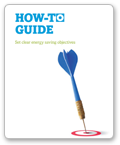 Energy Management
Energy Management
-
ToolEnergy Saving Assessment Tool

This tool is designed to provide an quick assessment of the energy saving potential based on the information provided by the user and on rules of thumb.
To save this tool Right Click the icon or download button and click Save As

 Energy Saving Tool
Energy Saving Tool -
User GuideEnergy Saving Assessment Tool

This is the User Guide for the Energy Saving Assessment Tool. It provides information and instructions on how to use the tool.

 Energy Saving Tool User Guide
Energy Saving Tool User Guide -
ToolOpportunities
Database
This database is a store for all of the opportunities and ideas for energy saving.
To save this tool Right Click the icon or download button and click Save As

 Opportunities Database
Opportunities Database -
User GuideOpportunities
Database
This is the User Guide for the Opportunities Database Tool. It provides information and instructions on how to use the tool.

 Opportunities Database User Guide
Opportunities Database User Guide
Implement Opportunities
Businesses will only be able to reduce carbon emissions and energy consumption by implementing the ideas put forward to achieve this objective.
This journey stage shows businesses taking staff ideas seriously, pursuing them and, as a result, lowering costs, improving environmental performance and enabling customers to benefit from a lower carbon product. Possible barriers to implementation, such as constraints regarding people, time and money can be overcome with the necessary planning and a flexible approach.
This journey stage gives staff the responsibility for implementing carbon and energy reduction techniques on the ground. Similarly, it might be necessary to involve third parties, such as contractors or specialists, in the approval and implementation of carbon and energy reduction ideas.
To show that ideas have been worth pursuing it is important for their effectiveness to be evaluated following implementation, but that is the subject of the next journey stage.
Implement Opportunities
Businesses will only be able to reduce carbon emissions and energy consumption by implementing the ideas put forward to achieve this objective.
This journey stage shows businesses taking staff ideas seriously, pursuing them and, as a result, lowering costs, improving environmental performance and enabling customers to benefit from a lower carbon product. Possible barriers to implementation, such as constraints regarding people, time and money can be overcome with the necessary planning and a flexible approach.
This journey stage gives staff the responsibility for implementing carbon and energy reduction techniques on the ground. Similarly, it might be necessary to involve third parties, such as contractors or specialists, in the approval and implementation of carbon and energy reduction ideas.
To show that ideas have been worth pursuing it is important for their effectiveness to be evaluated following implementation, but that is the subject of the next journey stage.
Implement Opportunities
Businesses will only be able to reduce carbon emissions and energy consumption by implementing the ideas put forward to achieve this objective.
This journey stage shows businesses taking staff ideas seriously, pursuing them and, as a result, lowering costs, improving environmental performance and enabling customers to benefit from a lower carbon product. Possible barriers to implementation, such as constraints regarding people, time and money can be overcome with the necessary planning and a flexible approach.
This journey stage gives staff the responsibility for implementing carbon and energy reduction techniques on the ground. Similarly, it might be necessary to involve third parties, such as contractors or specialists, in the approval and implementation of carbon and energy reduction ideas.
To show that ideas have been worth pursuing it is important for their effectiveness to be evaluated following implementation, but that is the subject of the next journey stage.


